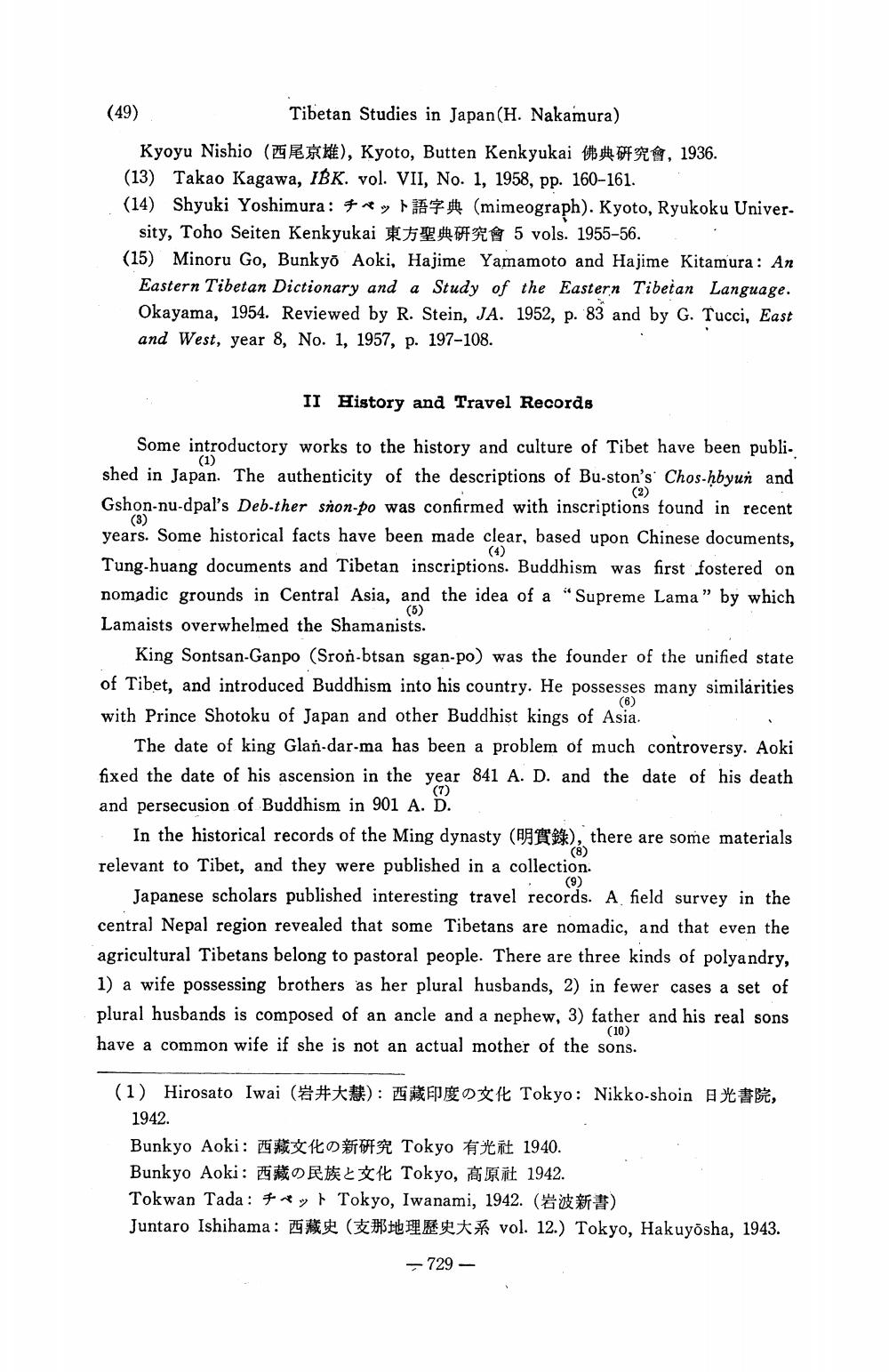Book Title: Tibetan Studies In Jjapan Author(s): Hajime Nakamura Publisher: Hajime Nakamura View full book textPage 4
________________ (49) Tibetan Studies in Japan (H. Nakamura) Kyoyu Nishio (E K ), Kyoto, Butten Kenkyukai # R , 1936. (13) Takao Kagawa, IBK. vol. VII, No. 1, 1958, pp. 160-161. (14) Shyuki Yoshimura: **, **(mimeograph). Kyoto, Ryukoku University, Toho Seiten Kenkyukai # 5 vols. 1955-56. (15) Minoru Go, Bunkyo Aoki, Hajime Yamamoto and Hajime Kitamura: An Eastern Tibetan Dictionary and a Study of the Eastern Tibetan Language. Okayama, 1954. Reviewed by R. Stein, JA. 1952, p. 83 and by G. Tucci, East and West, year 8, No. 1, 1957, p. 197-108. II History and Travel Records (1) (2) (3) (4) (6) (6) Some introductory works to the history and culture of Tibet have been publi. shed in Japan. The authenticity of the descriptions of Bu-ston's Chos-hbyun and Gshon-nu-dpal's Deb-ther snon-po was confirmed with inscriptions found in recent years. Some historical facts have been made clear, based upon Chinese documents, Tung-huang documents and Tibetan inscriptions. Buddhism was first fostered on nomadic grounds in Central Asia, and the idea of a “Supreme Lama” by which Lamaists overwhelmed the Shamanists. King Sontsan-Ganpo (Sron-btsan sgan-po) was the founder of the unified state of Tibet, and introduced Buddhism into his country. He possesses many similarities with Prince Shotoku of Japan and other Buddhist kings of Asia. The date of king Glan-dar-ma has been a problem of much controversy. Aoki fixed the date of his ascension in the year 841 A. D. and the date of his death and persecusion of Buddhism in 901 A. D. In the historical records of the Ming dynasty (KTK), there are some materials relevant to Tibet, and they were published in a collection. Japanese scholars published interesting travel records. A field survey in the central Nepal region revealed that some Tibetans are nomadic, and that even the agricultural Tibetans belong to pastoral people. There are three kinds of polya ndry, 1) a wife possessing brothers as her plural husbands, 2) in fewer cases a set of plural husbands is composed of an ancle and a nephew, 3) father and his real sons (10) have a common wife if she is not an actual mother of the sons. (8) (9) (1) Hirosato Iwai (*#*): G P It Tokyo: Nikko-shoin BE, 1942. Bunkyo Aoki:西藏文化新研究 Tokyo 有光社 1940. Bunkyo Aoki: OR It Tokyo, iki 1942. Tokwan Tada: # Tokyo, Iwanami, 1942. ( ) Juntaro Ishihama: * E t vol. 12.) Tokyo, Hakuyosha, 1943. 729 -Page Navigation
1 2 3 4 5 6 7 8 9 10 11 12
